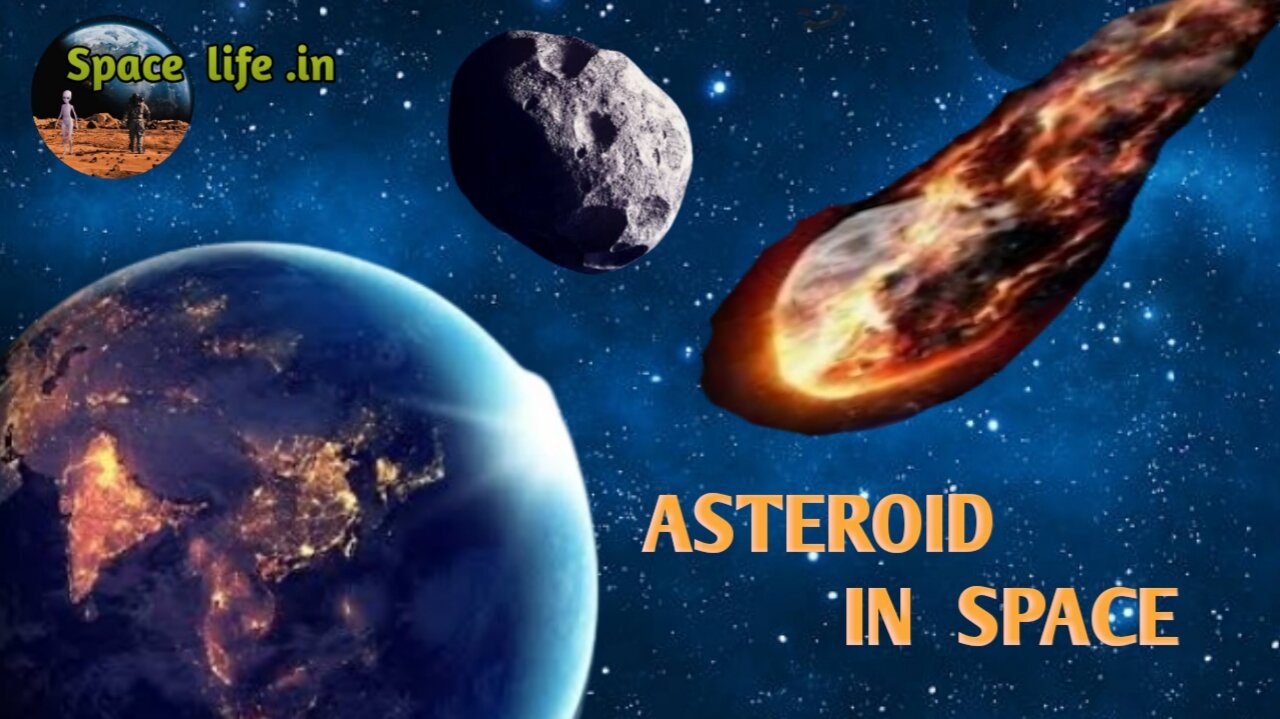Premium Only Content

Asteroids in Space || মহাকাশে গ্রহাণু |
An asteroid is a minor planet of the inner Solar System. Sizes and shapes of asteroids vary significantly, ranging from 1-meter rocks to dwarf planets almost 1000 km in diameter; they are metallic or rocky bodies with no atmosphere.
Of the roughly one million known asteroids the greatest number of them are located between the orbits of Mars and Jupiter, approximately 2 to 4 AU from the Sun, in the main asteroid belt. Asteroids are generally classified to be of three types: C-type, M-type, and S-type. These were named after and are generally identified with carbonaceous, metallic, and silicaceous compositions, respectively. The sizes of asteroids varies greatly; the largest, Ceres, is almost 1,000 km (600 mi) across and qualifies as a dwarf planet. The total mass of all the asteroids combined is less than that of Earth's Moon. The majority of main belt asteroids follow slightly elliptical, stable orbits, revolving in the same direction as the Earth and taking from three to six years to complete a full circuit of the Sun.
Asteroids have been historically observed from Earth; Galileo spacecraft provided the first close observation of an asteroid. Several dedicated missions to asteroids were subsequently launched by NASA and JAXA, with plans for other missions in progress. NASA's NEAR Shoemaker studied Eros, and Dawn observed Vesta and Ceres. JAXA's missions Hayabusa and Hayabusa2 studied and returned samples of Itokawa and Ryugu, respectively. OSIRIS-REx studied Bennu, collecting a sample in 2020 to be delivered back to Earth in 2023. Lucy, launched in 2021, has an itinerary including eight different asteroids, one from the main belt and seven Jupiter trojans. Psyche, to be launched in 2023 or 2024, will study a metallic asteroid of the same name.
-
 2:10:12
2:10:12
Badlands Media
1 day agoDevolution Power Hour Ep. 383: Epstein, Durham, and the Dictator Narrative
83.8K49 -
 2:40:10
2:40:10
DLDAfterDark
8 hours ago $0.29 earnedDLD Live! Feat. Red Dawn Readiness! Glock FRT's - Striker Fire Safety Concerns - ACE Trigger
23.3K2 -
 2:40:21
2:40:21
BlackDiamondGunsandGear
7 hours agoAre ALL Striker Fired Pistols UNSAFE? // After Hours Armory
43.6K8 -
 6:34:50
6:34:50
SpartakusLIVE
11 hours ago#1 Saturday Spartoons on RUMBLE PREMIUM
113K7 -
 1:04:59
1:04:59
Man in America
12 hours ago“Summoning the Demon” — The AI Agenda Is FAR WORSE Than We Know w/ Kay Rubacek
50.5K36 -
 2:16:48
2:16:48
Tundra Tactical
10 hours ago $0.11 earned🎯💥 The World’s Okayest Gun Show 🔫😂 | LIVE Tonight on Rumble!
31.3K1 -
 3:36:03
3:36:03
Mally_Mouse
1 day ago🌶️ 🥵Spicy BITE Saturday!! 🥵🌶️- Let's Play: Tower Unite!
57.1K2 -
 58:59
58:59
MattMorseTV
10 hours ago $1.61 earned🔴Trump just BROKE Newsom.🔴
73.1K86 -
 18:14
18:14
Her Patriot Voice
10 hours agoWho Is WORSE for NYC: Trump Girl or Socialist?
55K34 -
 3:39:42
3:39:42
SavageJayGatsby
10 hours agoSpicy Saturday with Mally! | Road to 100 | $300 Weekly Goal for Spicy Bites!
51.7K1